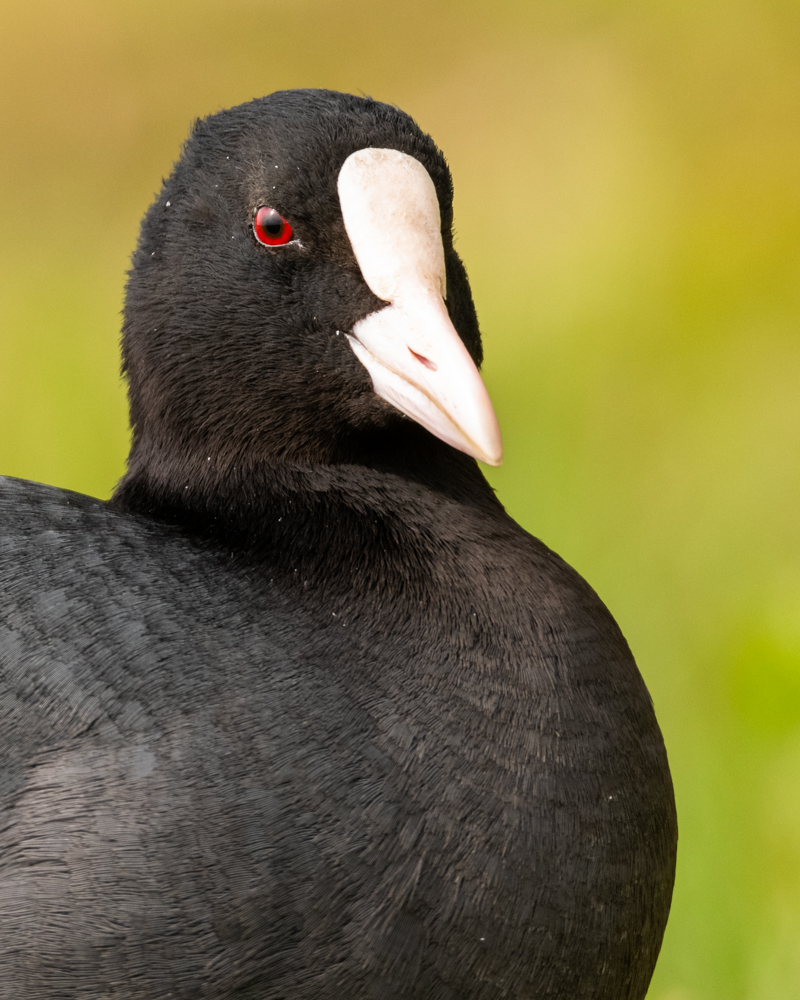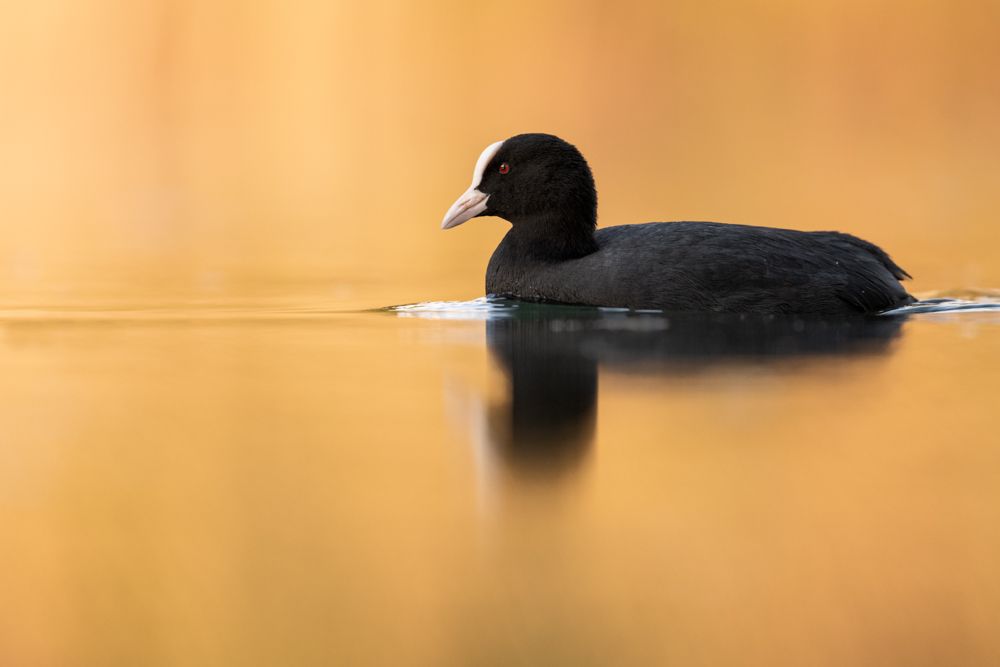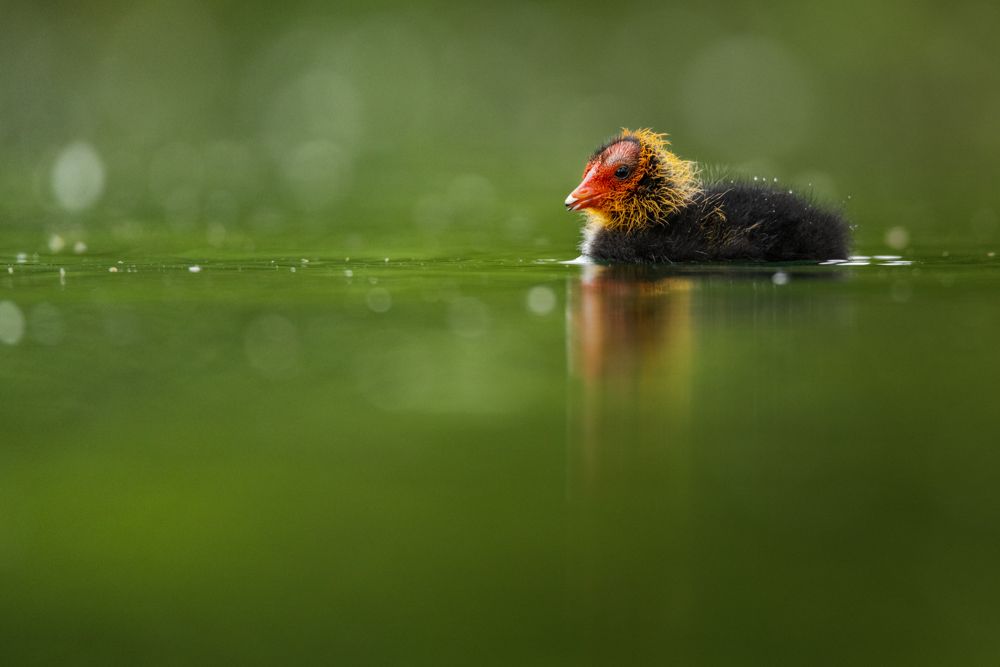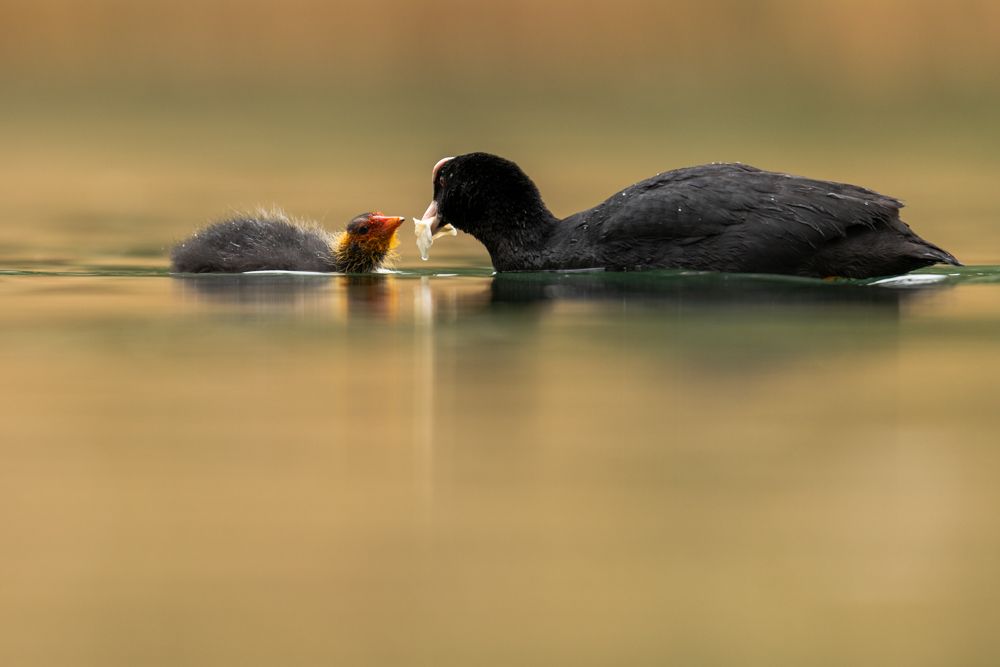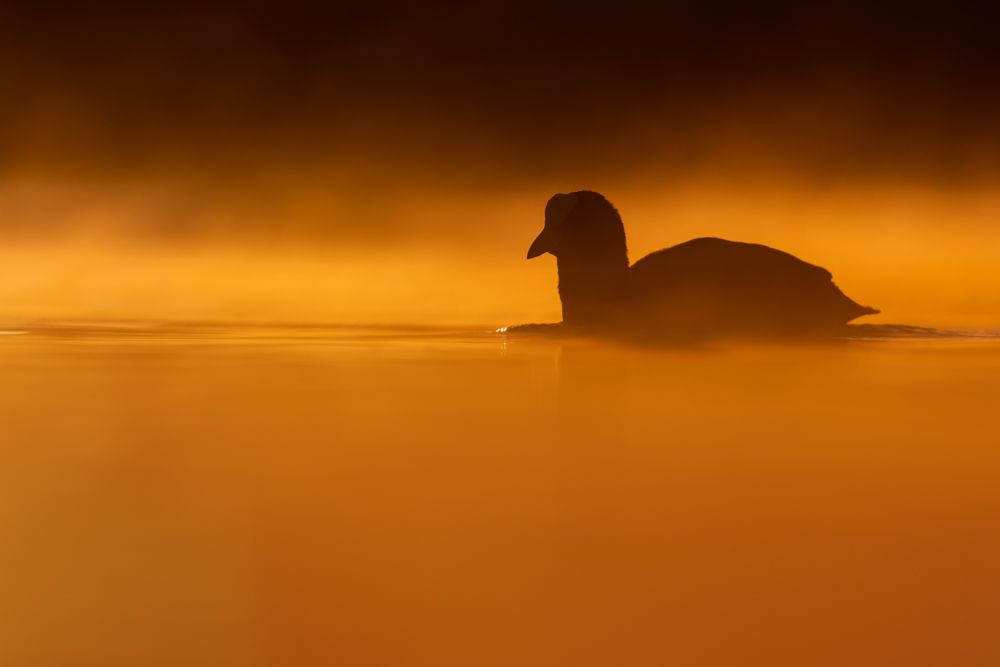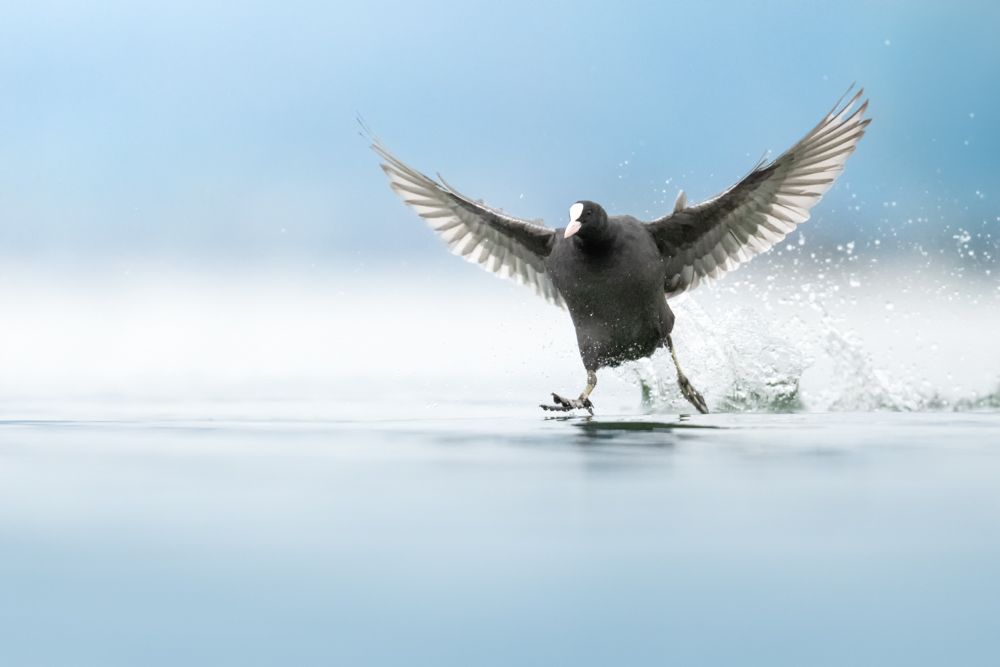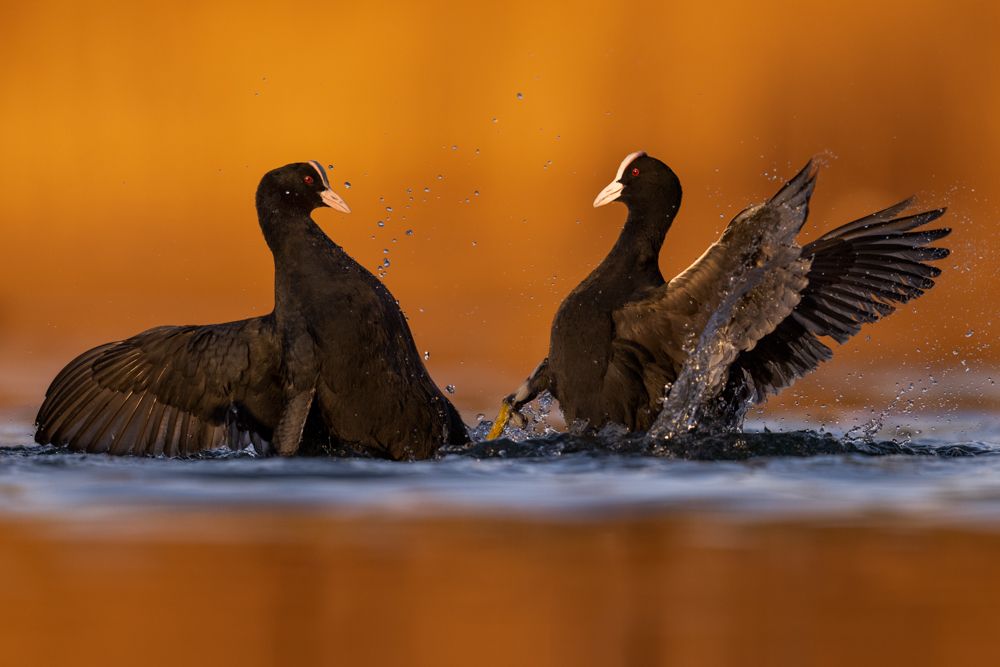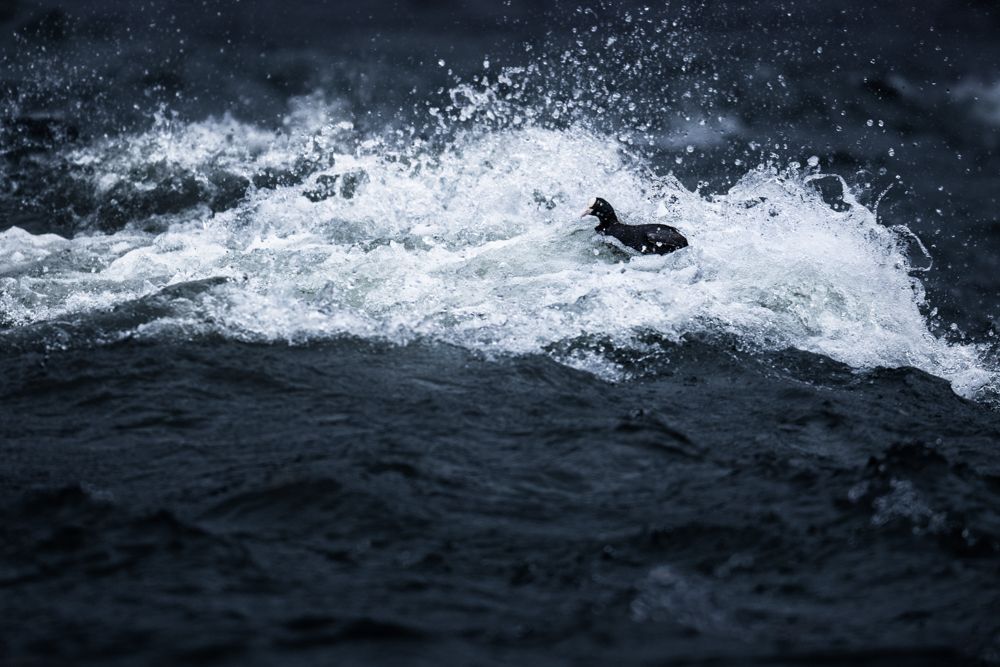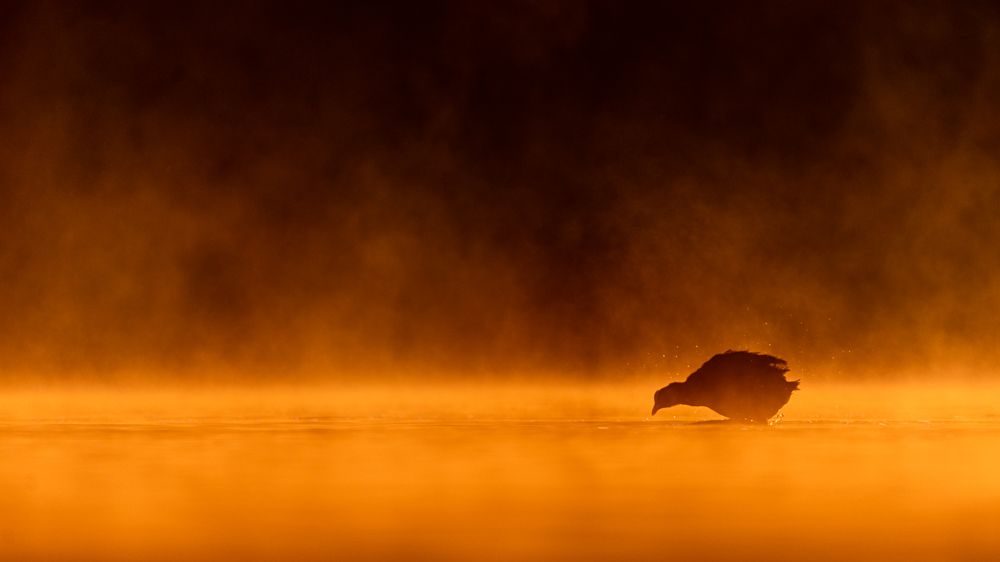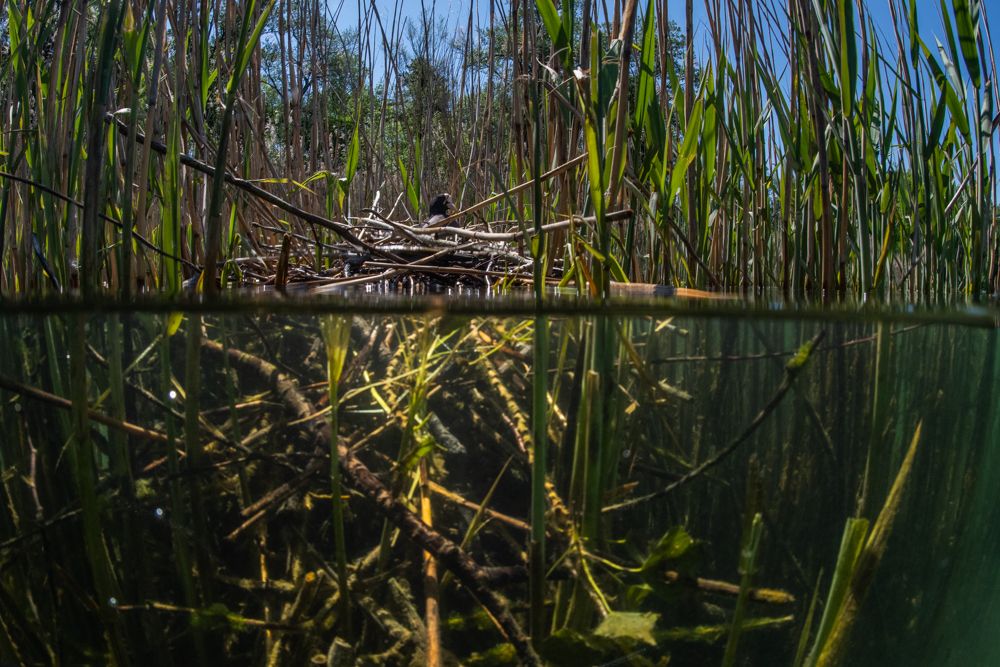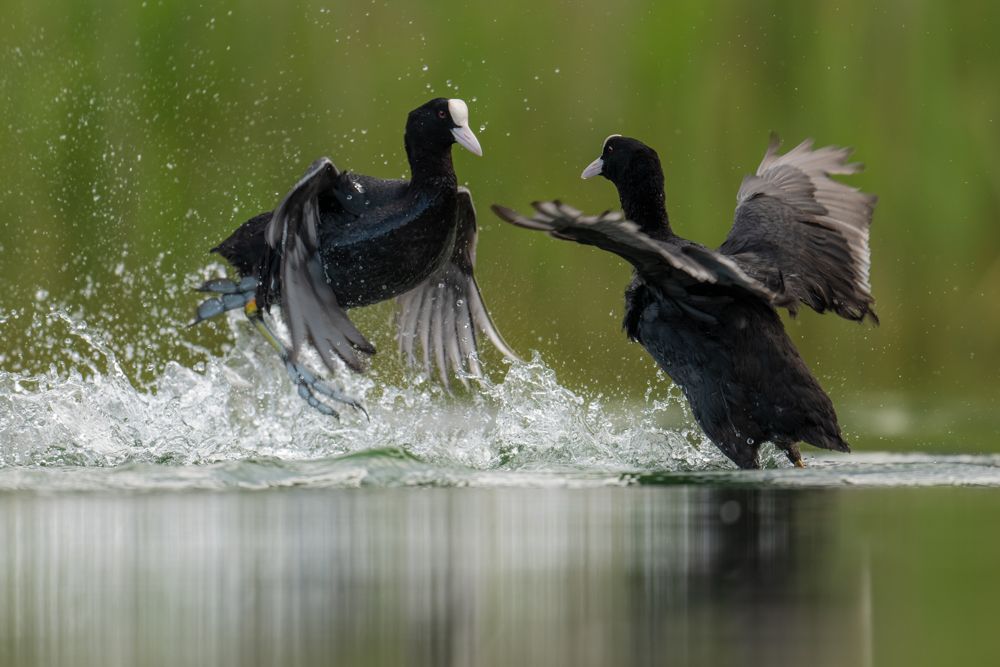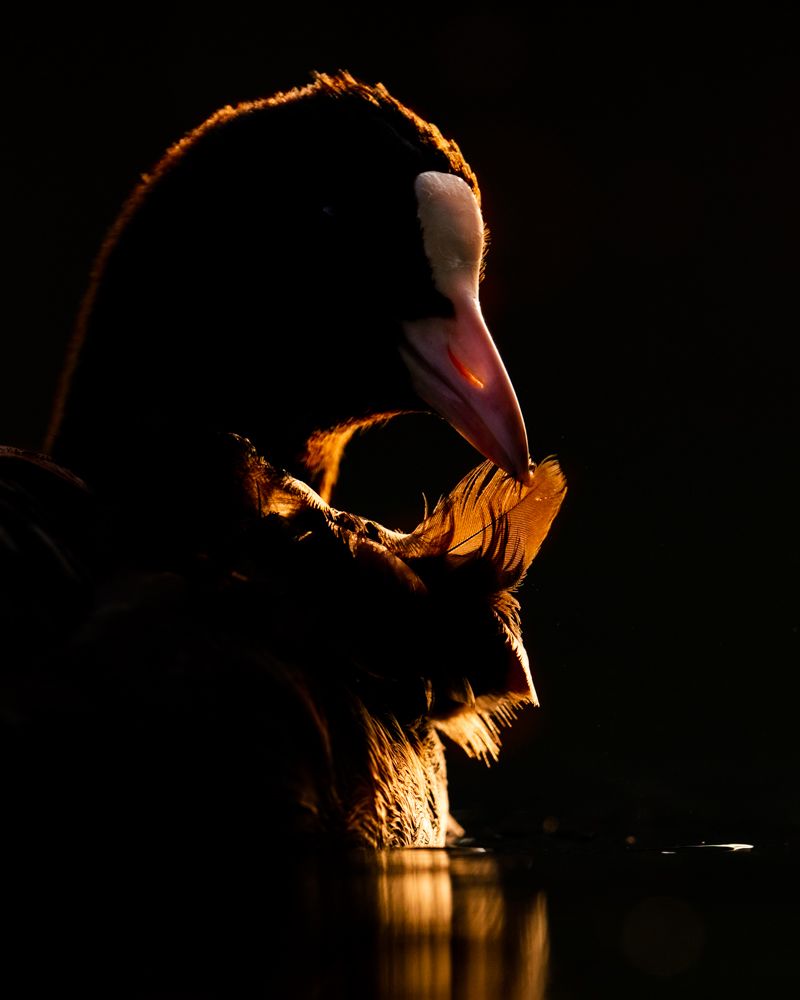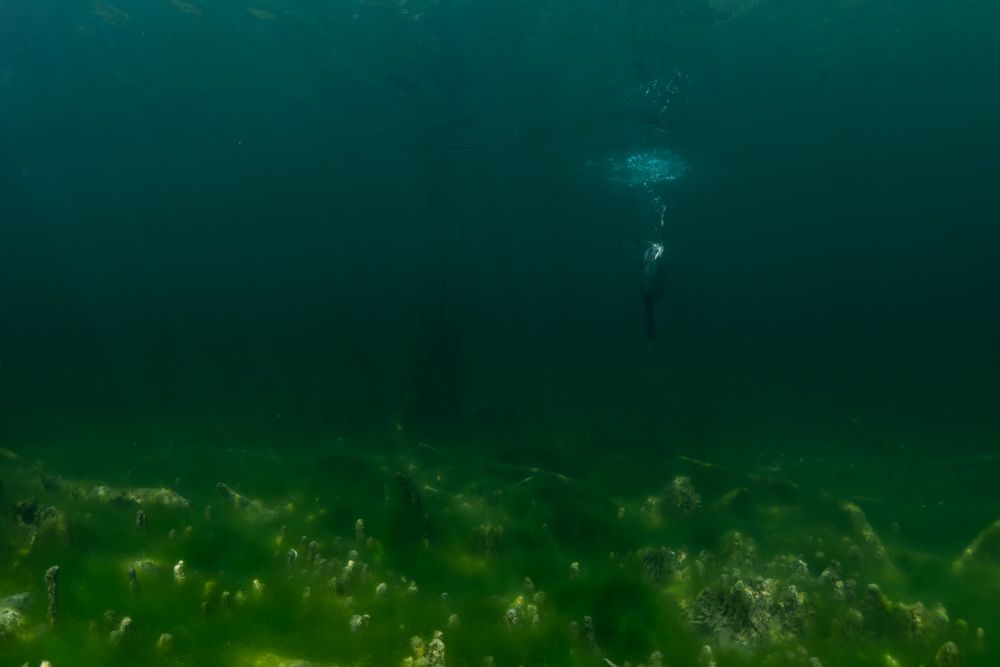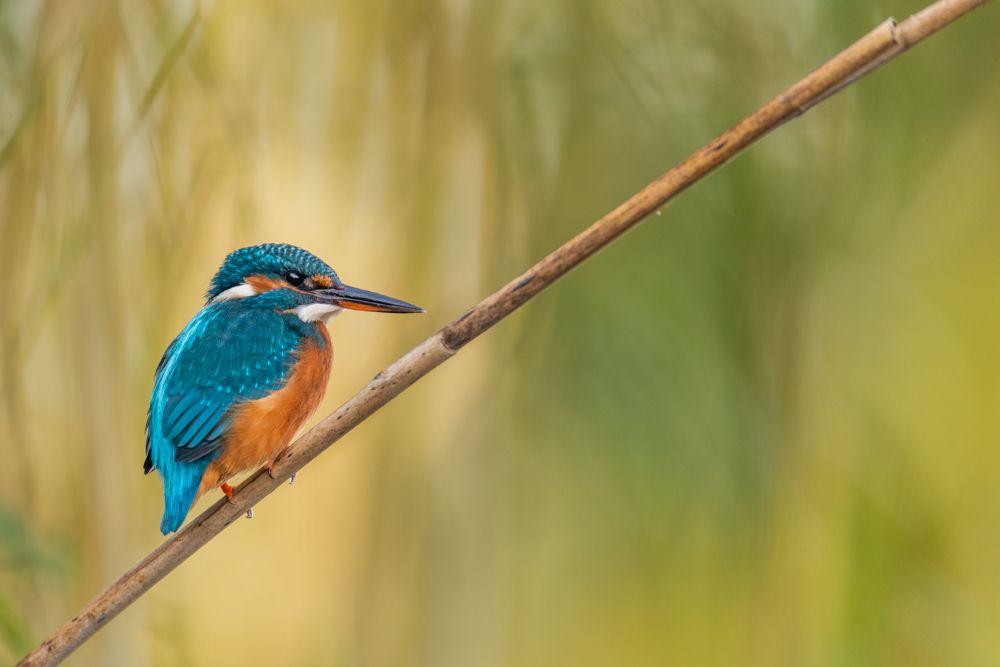Coot (Fulica atra)
Profile
Scientific name: Fulica atra
Class: Birds
Order: Crane birds
Family: Rails
Length: 36-38 cm
span width: 70-80 cm
Weight: 575-900 g
Distribution: Eurasia, Australia
Breeding population CH: 5'000-8'000 pairs
Habitat: Various waters
Migration behaviour: resident bird, short-distance migrant
Appearance
Although the coot is not particularly conspicuously coloured, the rail is very easy to identify. Both males and females have a completely black plumage and are not distinguishable from each other. The coot therefore does not show any sexual dimorphism. Beak and blaze (forehead shield) are white. The eye is dark red. In contrast to the water rail, a close relative of the coot, the coot has developed webs on its toes.
Although the coot is not particularly conspicuously coloured, the rail is very easy to identify. Both males and females have a completely black plumage and are not distinguishable from each other. The coot therefore does not show any sexual dimorphism. Beak and blaze (forehead shield) are white. The eye is dark red. In contrast to the water rail, a close relative of the coot, the coot has developed webs on its toes.
Risk of confusion
The coot can practically not be confused. There is no other bird species in Switzerland that resembles the coot. Even the closely related bird species can be easily distinguished from the coot.
Where does the coot live?
The coot lives in practically all kinds of waters from large lakes to slow-flowing waters and relatively small ponds. While the coot defends its territory in summer, it is more tolerant towards other species in winter.
Occurrence in Switzerland
In Switzerland, the coot is a very common bird. The coot breeds on lakes at up to about 1000 m above sea level, but there are exceptions at about 1800 m above sea level.
In Switzerland, the breeding population is estimated at around 5,000 to 8,000 pairs. The population has hardly changed in the last 30 years.
During Winter, waterbird surveys have counted around 100,000 individuals in Swiss waters. This figure has fluctuated again and again but shows neither a positive nor a negative trend.
What does the coot eat?
The coot feeds mainly on water plants. A dive usually lasts between 5-10 s. If needed, the coot can dive to depths of up to 8 m. The maximum dive time is 30 s.
In winter the coot additionally feeds on land plants. In the vicinity of settlements, bread is also a major component of their diet. However, the coot does not live an exclusively vegetarian life, as it also eats invertebrates.
How long does a coot breed?
The breeding period of the coot is about 21 to 23 days long. The nest is usually found in reeds or otherwise in the shore vegetation. In the vicinity of settlements, the coot also likes to build its nest on landing stages or on the motor of boats. Unfortunately, these nests are often destroyed. The clutch size is around 6-9 eggs. After about 3 weeks the young hatch. They leave the nest after a short time. Unlike the ducks, the young coots are still fed for the first few weeks. In addition they still visit the nest for protection or to sleep. Usually one pair of coots raises about 3 young per brood. In most cases there is only one brood per year. However, a second brood is not uncommon for coots.
Migration behaviour
In our country, coots are mainly resident birds. In winter, however, many coots from the northeast move to Switzerland again.
Behaviour
The coot is particularly aggressive towards conspecifics but also towards other bird species. Especially during the breeding season the birds scare away everything that comes close to their nest. Among conspecifics it often results in fights. Also against the young of conspecifics the coots are aggressive. The young can even be drowned or chopped to death.
Even if this is only very rarely the case, coots can actually fly. However, they need a lot of effort to do so and they do not look very elegant in flight.
Photographing coots
Coots can be photographed without much effort, especially in winter. Because they show little to no shyness, especially near settlements, they are very suitable for practising waterfowl photography. What you should pay attention to when photographing waterfowl, I have described in the following articles. There I explain how you can get close to ducks, why perspective is so important, and where you can photograph waterfowl easily.
Other species
Resources
The population figures, length, weight and wingspan correspond to the data of the Vogelwarte Sempach
Information on behaviour, distribution etc. is based on my own observations and was supplemented with information from the following sources:
The Birds of Switzerland (2007) Lionel Maumary et al.
Swiss Breeding Bird Atlas 2013-2016
The Cosmos Bird Guide (2017) Lars Svensson et al.


